|
|
|
|
|
|
|
 |
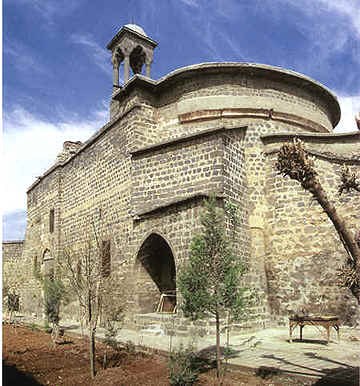 |
|
{Source:- 'TURABDIN' published by Hans Hollerweger} |
It was at this Church of the Mother of God at Amida (Turkey), Patriarch Mor Ignatius Yakub II ordained Fr. Joseph Pulikottil as Metropolitan by name Mor Divanasios, on 26th Medam (month of May), AD.1865.
History of the Ancient Church
Omid/Amida is one of the most important Syriac Christian centre of Turkey. Already in the fourth century the place was an Episcopal See. In the Middle Ages the Syrian Orthodox Patriarch resided here. The present church of the Mother of God ('Meryemana kilisesi', in Turkish) was once the great Cathedral built perhaps in the sixth century. The nave of that Cathedral broadened into a round church towards the west. On either side of the apse one can still admire the Corinthian capitals with the garlands typical of this area and the finely sculpted remains of the ancient sanctuary arch. These remains speak eloquently of the size and beauty of the original building.
Northwards of the apse one enters another Church with three altars and the tomb of 'Jacob of Serugh' (AD 451-521), a learned bishop, who, like St. Ephraim in the 4th century, taught through the medium of poetry set to music. Next to the church is located the Patriarchal residence of the 19th century.
Connection with Malankara Church
St. Gregorious Abdul' Jaleel entombed at N.Paravur St.Thomas Church was earlier the Syrian Orthodox Metropolitan of the Omid diocese in 'Diyarbakr' (Turkey). For 10 years, from 1653-64, this church of the 'Mother of God' functioned as his administrative headquarters. In 1664 he was transferred to the Archdiocese of Jerusalem. A year later, Mor Gregorios left for Malankara (India) on the request of the local Church and died there on 27th April 1681.
It was at this church at Omid, the late Malankara Metropolitan, 'Pulikottil Mor Dionysius V' (AD 1833-1909), was ordained as Metropolitan by name 'Mor Dionysius Joseph', by the Patriarch of Antioch & all the East, H.H. Ignatius Yakub II on 26th Medam ( May) AD 1865.
| Interior of the church |
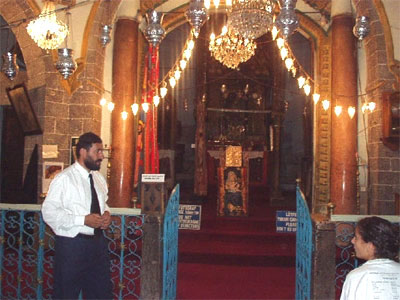 |
| The ancient Wooden Altar in the church |
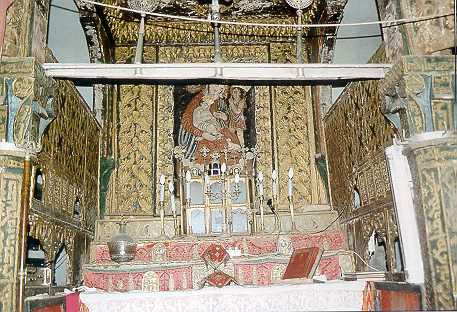 |
|
A wooden altar canopies in the main Church |
Tomb of Jacob of Serugh in the church |
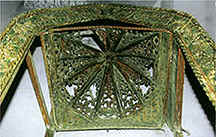 |
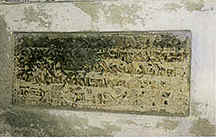 |
About the Place:-
'Diyarbakir' is a large city on a basalt plateau on the Tigris with mainly Kurdish inhabitants. The importance which was attached to this city can be measured by the length and breadth of the wall which stretches 5.5. Km around the city. Vital to the Roman defense of Mesopotamia against the Persian Empire, Omid (or Amida, to give it its Roman name) was conquered by the Arabs in 639, by the Seljuk's in 1085, and by Sultan Selim I in 1515.
|
The Bridge over the Tigris, with Diyarbakir in the background This Bridge built by John Saoro, bishop of Omid (AD 483-503) who had previously been the abbot of the Monastery of Kartmin. |